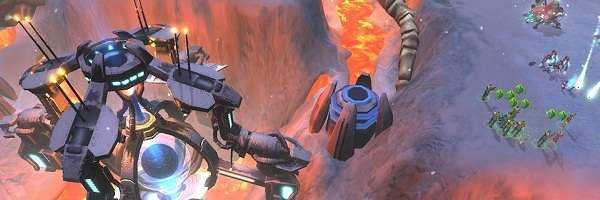
Tryst PC Review
The realm of great real-time strategy games (RTS) seems to be limited to the PC; the use of keyboard and mouse is the perfect method to control your army, and trying to capture that on a console just does not work. Recently, there have not been many RTS games to shout about, with StarCraft II stealing most of the limelight for the genre. The future is looking interesting after the recent announcements of the Frostbite 2-powered Command & Conquer: Generals sequel and the very successful Kickstarter campaign for Planetary Annihilation – the spiritual successor to one of my favourite RTS games ever, Total Annihilation. Indie developer BlueGiant Interactive are bringing their latest game, Tryst – a sci-fi take on the genre – to fill the void between the wait for the next big RTS game, but does it do the job well enough for gamers to forget about what is coming up on the horizon?
Tryst takes place far into the future. The year is 2900AD, and Humans are harvesting a compound known as Lohum on the planet Ishtonia IV. As generations grew, so did the need for change, and just like our history on Earth, a civil war broke out that split the inhabitants of Ishtonia IV into two factions. During the conflict between these two factions, an alien sentient machine race, called Zali, came to take resources from the planet and bumped into the Human race, which escalated into an all-out war to eradicate any Human settlements on the planet. There is no time for civil war, as both factions join forces to stop the Zali’s destruction of human kind on Ishtonia IV. The story did not do anything for me as it came off feeling like just another alien invasion story. It is not bad per se; rather it feels a little uninspiring and never fully develops into anything.
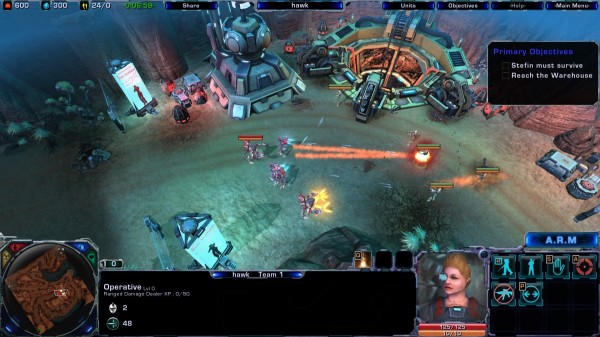
The campaign for Tryst is on the short side – we are talking five missions here. As a person who enjoys going through a good campaign in RTS games, I felt really disappointed with the sheer length on offer. It feels like the campaign is only in the game to teach the player the mechanics (which it does well) so that players are adequate enough to test their skills in a multiplayer online match. I do have to put my hand up and say that there are some good ideas in the campaign, such as the way the game forces the player to pick from two objectives during a mission. One of the earlier ones is to call for reinforces or turn on the power generator so that the turrets come back online and the base is protected. Having the player forced to pick from an objective in a campaign is a good inclusion to change the flow of battle and give a slightly different take on the mission.
If any gamers reading this have played an RTS before then you will have a pretty good idea on how Tryst plays. Engineers are key units that are needed to build a base. These dudes will build your barracks, turrets, etc. Building units – like operatives (snipers), medics, and soldiers – costs resource points, which in Tryst consists of ore and electricity; if you do not have enough then you cannot build. To accumulate more, you need to capture resource points on the map. There is a unit restriction in place stopping the player from immediately building hundreds of units, but unlike Supreme Commander, you can extend this by building storage units that add ten to the maximum unit capacity.
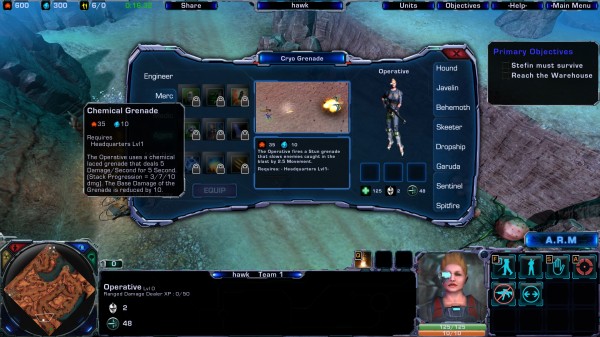
While most of the game sticks to the tried and tested RTS formula, the Augmentation Research Mechanism (ARM) is somewhat of an interesting take on upgrading units, and acts as the Tryst’s tech tree. ARM allows players to upgrade their units while they are out on the battlefield, similar to what you could do to squads in Dawn of War, allowing you to upgrade units to fit for the situation in battle, and keeps with the streamlined pacing of the game. Tryst’s battles move at a very fast pace. The speed is one of the highlights, as the opposition likes to get things moving within minutes, and after, things just keep going until it ends, keeping the player engrossed in the war.
Once the campaign is beaten, players are left with single-player skirmish mode, and multiplayer, where you can play as any of the two races – the Humans or the Zali. Finding multiplayer games was rather difficult. We are talking minimal amounts here – like seven people sitting in the lobby, waiting for someone to create a match to join. It is a shame that not many gamers are playing, as multiplayer can be fun, featuring the same speedy progression and fast-paced battles as what you experience offline. With up to eight players available, Tryst’s online matches can become a hectic place when the battle gets going.
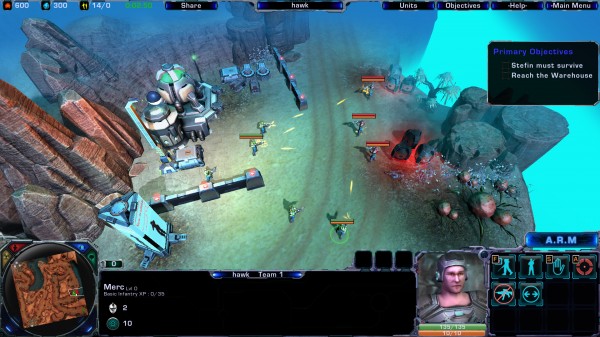
I am not sure what is causing the lack of interest for Tryst. I can take a guess and say maybe it is the price that is putting people off, because at the moment Tryst is £19.99 on Steam, and since the game lacks a lengthy campaign, I can see not many gamers willing to invest that much money into playing it, especially if the online is not popular. A sale might spice up the online community, but in the meantime, do not expect to find more than a handful of players.
Tryst suffers from a few bugs, lacking that last bit of polish in development. During my time with the campaign – around 4 hours – I had two major crashes that sent me back to the Windows desktop. It mentioned something to do with the UNIENGINE coming up with an error; thankfully, they are automatic saves that happen after you finish an objective, so I did not lose that much progress. The save system is a little strange too. It never seemed to directly save me where I saved, instead putting me back at a checkpoint, or at some point I had already passed.
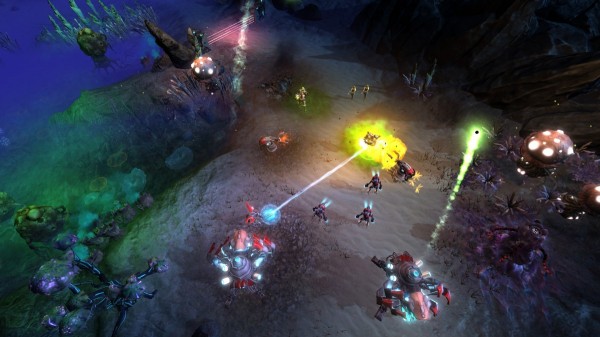
Speaking of the UNIENGINE (the same engine that powered the beautiful-looking Oil Rush RTS game by Unigine Corp), Tryst does not look that great. The style it is going for reminds me a lot of StarCraft, due to the environment, effects and the interface. In the graphics options, players can turn on the “toon shader” effect that gives the game a cel-shading style. It does not look half bad, in fact giving Tryst more of a personality than the standard look.
Tryst is a title that could have done with some more time in development. Featuring such a short campaign is a huge shame that I cannot help but feel unhappy about, but even then, the multiplayer is sorely lacking, which I understand is not totally the game’s fault. When gamers are paying a decent amount of money for a digital title that seems aimed at multiplayer, and the multiplayer is empty, then there is a problem with Tryst‘s content. I feel that having more campaign missions would have helped turn the sour taste a little sweeter. Maybe down the line the game will grow through patches, free content and a sale, getting better in the process. But right now, this is an average RTS game that is fun and fast, but sorely needs content or something to take it off life support.
